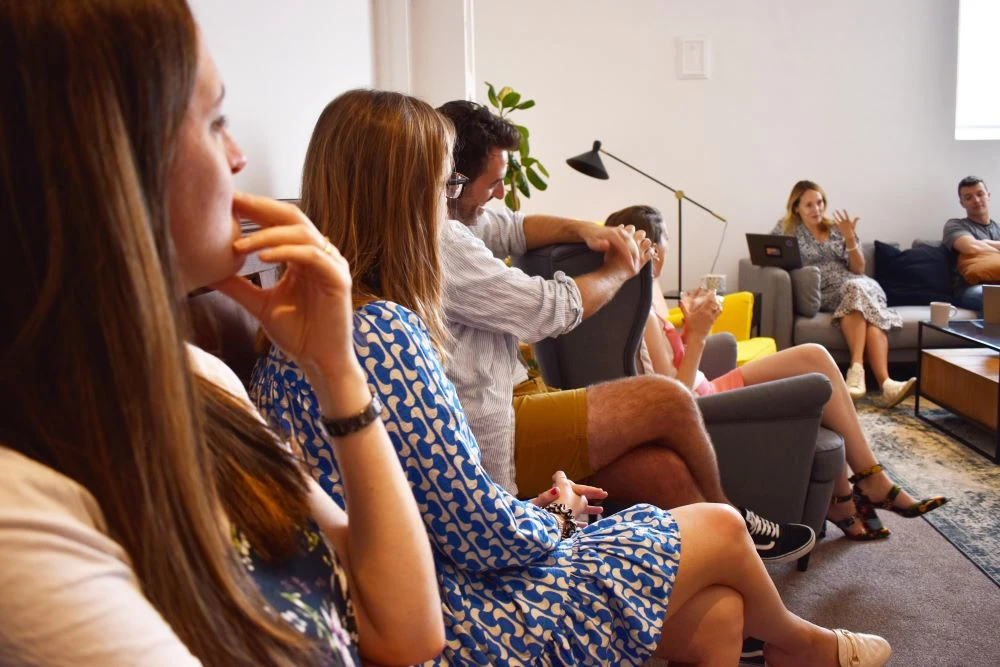Know your audience
Establish your identity
Once you’ve got a clear understanding of your audience, you can start to create a clear identity for your campaign. Your campaign creative does the important job of giving you a defined personality, so make sure that it’s both engaging and memorable.
For Wiltshire Council, we were able to create a clear campaign concept called ‘everyday matters’. This campaign was all about the positive impact fostering can have on foster carers, their families and the children and young people who are cared for, every day.
We brought this idea to life by identifying ‘everyday’ family scenarios like eating together, that the target audience could relate to. They represented both the practical implications and emotional benefits of fostering.
Make sure you're reaching the right people
Equally important to understanding your audience is knowing when and where to target them. With so many different online and offline marketing tools to choose from, it can feel a little overwhelming knowing which ones are right for your campaign.
A key thing to remember here is that you don’t have to use all the channels at your disposal. In fact, you’ll likely fail if you spread yourself and your resources too thin. What you’ll need to do is weigh up which channels are the most suitable for targeting your particular audience. And then determining when are the most likely times that they’ll want to engage. For example, running a social media ad campaign through the early hours of the morning isn’t likely to benefit your brand. Unless you’re Deliveroo.
When considering our best targeting strategy for Wiltshire Council, we made sure that we knew the needs of the stakeholders from the offset. They were looking for a suite containing a mixture of digital and printed assets to support their campaign, both through online targeting and exhibitions. This was adjusted to focus specifically on the digital elements as the campaign was activated during lockdown. Throughout our targeting strategy, we made sure that the needs of the organisation were being met, whilst also making sure that we were satisfying our audience.
Be real and relatable
Reaching your audience on a human and emotional level is particularly important with a campaign of this nature. The most important message to get across is just how much of a difference fostering can make to a young person’s life. Having this child-centred approach reminds your audience of the true purpose for your campaign.
Sadly, there are some pretty damaging stereotypes surrounding foster care. You know the ones - the kids are out of control, the biological parents are hopeless, and the foster carers are only in it for the money. But anyone in the foster care system will know this is far from the case.
For this reason, foster carer recruitment has a huge responsibility in dispelling these myths and reminding people of the true benefits of fostering - the life-changing impact on a child’s life, and the incredibly rewarding experience that goes with it.
Use data to your advantage
A common mistake that marketeers can make with campaign data is to simply report it at the end of a project and leave it at that. Just providing swathes of data with no explanation can be quite jarring for many organisations, especially if no explanation or recommendations are given. The most important thing to do with this data is to analyse it and use these finding to influence continuous improvement, for both your current and any future strategies.
With a foster carer recruitment strategy, this data collection and analysis plays a crucial role. Not only in attracting new foster carers, but in helping to place the right child with the right carer. So use it to your very best advantage.
Putting it all to use
All in all, preparation is the key to your success. And as they say, if you fail to prepare, then you must prepare to fail…
Like all good things, an effective recruitment strategy takes time and careful planning. So if you’re looking for some help creating an effective foster carer recruitment strategy or would like to discuss working with us, get in touch with a member of our team today and we’ll be more than happy to help.
Originally published:
May 4, 2021
Updated:
November 29, 2023





